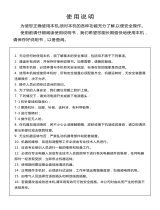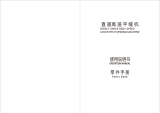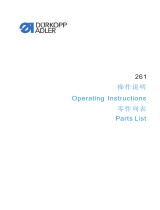DURKOPP ADLER 251-140042 Operating instructions
- Category
- Sewing machines
- Type
- Operating instructions
DURKOPP ADLER 251-140042 is a versatile sewing machine designed for medium, light, and heavy-weight materials with a maximum sewing speed of 5,000 rpm for medium-weight materials and 4,000 rpm for light and heavy-weight materials. It features adjustable stitch length up to 4mm for medium and light-weight materials and up to 5mm for heavy-weight materials, and a presser foot lift of up to 13mm. It requires DBx1#9 to #18 needles for medium-weight materials, DAx1 #9 to #11 needles for light-weight materials, and DBx1 #20 to #23 needles for heavy-weight materials.
DURKOPP ADLER 251-140042 is a versatile sewing machine designed for medium, light, and heavy-weight materials with a maximum sewing speed of 5,000 rpm for medium-weight materials and 4,000 rpm for light and heavy-weight materials. It features adjustable stitch length up to 4mm for medium and light-weight materials and up to 5mm for heavy-weight materials, and a presser foot lift of up to 13mm. It requires DBx1#9 to #18 needles for medium-weight materials, DAx1 #9 to #11 needles for light-weight materials, and DBx1 #20 to #23 needles for heavy-weight materials.




















-
 1
1
-
 2
2
-
 3
3
-
 4
4
-
 5
5
-
 6
6
-
 7
7
-
 8
8
-
 9
9
-
 10
10
-
 11
11
-
 12
12
-
 13
13
-
 14
14
-
 15
15
-
 16
16
-
 17
17
-
 18
18
-
 19
19
-
 20
20
DURKOPP ADLER 251-140042 Operating instructions
- Category
- Sewing machines
- Type
- Operating instructions
DURKOPP ADLER 251-140042 is a versatile sewing machine designed for medium, light, and heavy-weight materials with a maximum sewing speed of 5,000 rpm for medium-weight materials and 4,000 rpm for light and heavy-weight materials. It features adjustable stitch length up to 4mm for medium and light-weight materials and up to 5mm for heavy-weight materials, and a presser foot lift of up to 13mm. It requires DBx1#9 to #18 needles for medium-weight materials, DAx1 #9 to #11 needles for light-weight materials, and DBx1 #20 to #23 needles for heavy-weight materials.
Ask a question and I''ll find the answer in the document
Finding information in a document is now easier with AI
Related papers
Other documents
-
 ZOJE ZJ5303A-W-BD Parts Manual
ZOJE ZJ5303A-W-BD Parts Manual
-
 ZOJE ZJ9513-G Parts Manual
ZOJE ZJ9513-G Parts Manual
-
Juki DDL-8700BH-7 User manual
-
Reliable 5000SD User manual
-
Siruba VC008A Instruction book
-
Siruba 700KS LF-D6K1 Instruction book
-
Siruba VC008B Instruction book
-
Siruba C007KP Instruction book
-
Siruba 700KS LF-D6K Instruction book
-
Juki SC-510 Safety guide


























